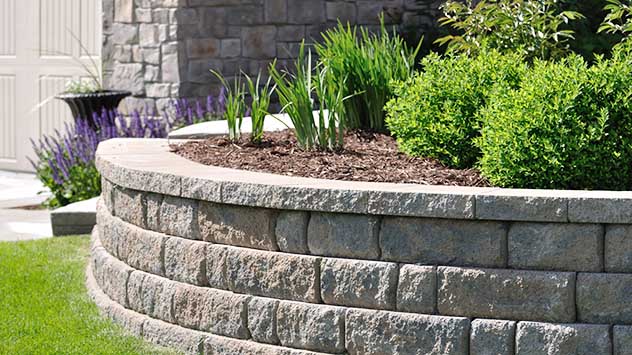Lay a 4 6 inch layer of the crushed base material in the trench.
Retaining wall base gravel calculator.
Enter the number of walls wall dimensions and coverage amount to get started.
The calculator will include this in the estimate but you can also use our cubic yardage calculator to estimate 6 of gravel for the project.
With our gravel calculator you can do it by multiplying the volume of purchased gravel or its weight by the price of one cubic yard or the price of one ton other units of weight or volume are also available.
Calculating how much gravel you need.
If the wall is l feet long h feet high and t inches thick then the trench needs to be l feet long 0 12h feet deep and 2t inches wide.
Choose a paver base with landscape rocks between 1 2 inch and 3 4 inch in size.
Before building a retaining wall plan it out.
We recommend making the base twice as wide as the block depth to account for settling.
Round rocks such as pea gravel rolls and dislodge under pressure resulting in failure of the retaining wall.
Now convert the volume to cubic yards.
150 mm plus an additional 1 in.
The retaining wall should be set embedded below grade on a level base of 6 gravel or stone.
Gravel calculator use this online gravel calculator to estimate how much gravel in volume cubic ft cubic yards or cubic meters or weight tons pounds tonnes and kilograms.
To know that you need to calculate the total cost.
Due to soil erosion your retaining wall should be built on a solid foundation made from paver base.
Similar to gravel paver base is a form of construction aggregate that contains crushed rocks such as limestone.
Planning a retaining wall.
Retaining wall base trench.
Start by measuring the length width and depth of the area you need to fill in the same unit of measurement.
You can use our gravel estimator to deal with these calculations.
In cubic yards the volume of the trench is lht 1350 and about half of the volume will be filled with coarse gravel.
It uses a standard pea gravel density.
Next compact it and level it using either a hand or mechanical compactor.
The first step to estimating gravel sand or soil is to estimate the volume of material needed.
Fill the trench with a 2 to 3 inch layer of paver base.
Dig a base trench 24 in.
More information on retaining walls where the base trench steps up a slope.
Poured concrete is typically the most expensive followed by wood timber and then stones and pavers.
Avoid placing the retaining wall where downspouts are pointed to keep standing water from forming inside the wall.
Multiply the length width and height together to find the volume of the space.
Retaining wall cost varies by material.
600 mm wide the length of the wall the depth of the trench will be 6 in.

